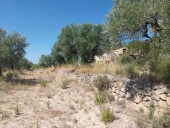




 we will grow sugar cane and make our own mojitos
we will grow sugar cane and make our own mojitos 
soloenespana.wordpress.com




Pecan Media: food forestry and forest garden ebooks
Now available: The Native Persimmon (centennial edition)




Moderator, Treatment Free Beekeepers group on Facebook.
https://www.facebook.com/groups/treatmentfreebeekeepers/









soloenespana.wordpress.com




 But I would also love to have some merino or something for my knitting, plus having our own goat/sheep milk wouldn't be too bad (don't know how sheep milk tastes, but I'm thinking I'd like it more for ice cream, coffee etc than goat milk), or - in time, a small cow (just the thought of homemade butter hhmmmm). And a few pigs would be nice too.
But I would also love to have some merino or something for my knitting, plus having our own goat/sheep milk wouldn't be too bad (don't know how sheep milk tastes, but I'm thinking I'd like it more for ice cream, coffee etc than goat milk), or - in time, a small cow (just the thought of homemade butter hhmmmm). And a few pigs would be nice too.




Moderator, Treatment Free Beekeepers group on Facebook.
https://www.facebook.com/groups/treatmentfreebeekeepers/









 just enough for ourselves, not a crop we plan to sell.
just enough for ourselves, not a crop we plan to sell.
 but either way -
but either way -
soloenespana.wordpress.com




Dawn Hoff wrote:What was only when and if we get the soil good enough - and we plan on using Fukoyokas methods, no tilling
just enough for ourselves, not a crop we plan to sell.
My chickens don't really care whatnI bring them once they are in the dog foodbut either way -
Moving the fence once a week or every 10 days is far too much work in our rocky soil...
I can see that I have not explained myself very well. We plan on planting trees between the olives - on contour - around 800/hectare: Figs, Mulberry, Pomegranate, Dates, apricot, peach, apples, wild pears, prickly pear, oak, pistachio, almond, walnut, pine nut, laurel, juniper, acacia, jaquarand, mimosa, honeylocust (ideas are very welcome here). Underneath blackberries, artichoke, rosemary, lavendler, grapes, n-fixing wines. I would plant in fenced rows with small pasture between - for animals and possibly a grain crop (but only in the long run when soil has greatly improved).
I will try out the vertiver grass and see how it does - thank you
Moderator, Treatment Free Beekeepers group on Facebook.
https://www.facebook.com/groups/treatmentfreebeekeepers/









soloenespana.wordpress.com








 ). I will let you know if I find it.
). I will let you know if I find it.soloenespana.wordpress.com

|
My cat hates you. She hates this tiny ad too:
The new purple deck of permaculture playing cards
https://www.kickstarter.com/projects/paulwheaton/garden-cards
|




